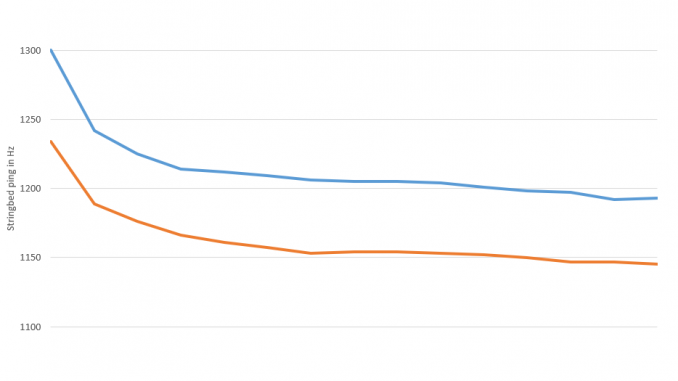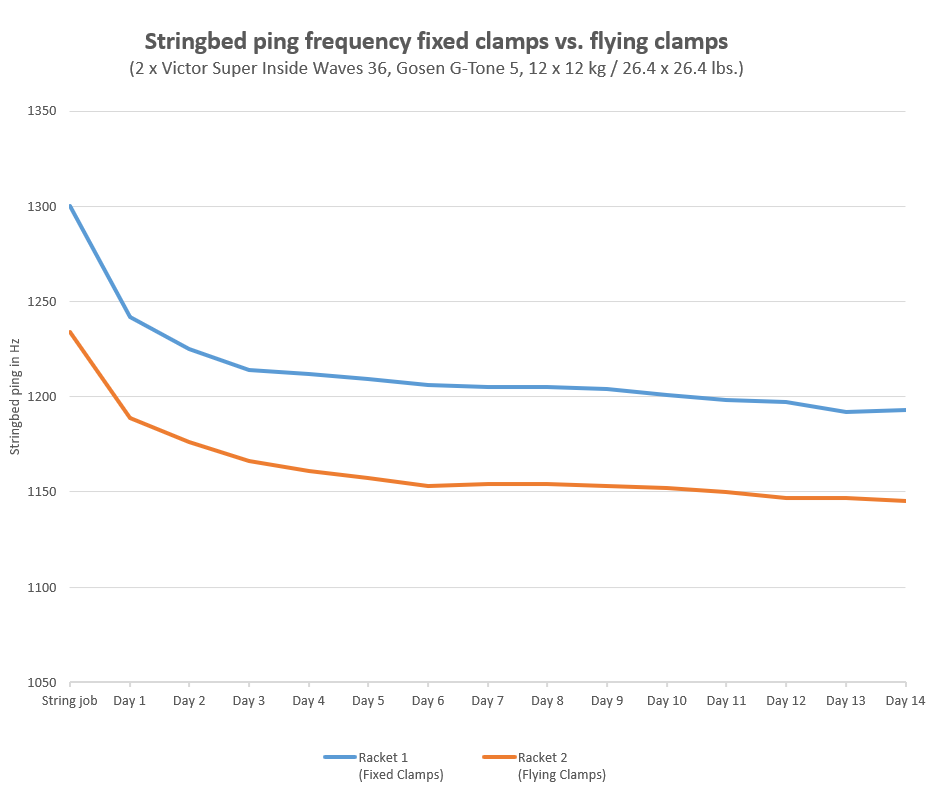
Part III: Fixed Clamps vs. Flying Clamps
….you know the drill by now.
Experiment setup
Rackets: 2 x Victor Super Waves 36
String: Gosen G-Tone 5 (0.65 mm), yellow
Stringer: myself
Machine: StringMaster Deluxe with WISE tension head
Pattern and process details were identical best possible (Haribito 1-Piece, no added tension before tie-off knots, no double pulls).
Setting
Both rackets: 12 x 12 kg (26.4 x 26.4 lbs.), no pre-stretch
Racket #1: Fixed clamps
Racket #2: Flying clamps (one Yonex, one Hi-Qua clamp)
Results
Data for racket +#1 are a carry over from Part II, so it was not a perfectly simultaneous setup this time. So temperatures and humidity levels were different. I have decided to shorten the experiment duration to 2 weeks, since previous results have shown that there are no significant effects to be expected after that. Racket #2 was not played during these 2 weeks.
Let’s look at the graph:

Raw data: https://www.dropbox.com/s/z0kfv722n2iowhl/Tension Loss Flying Clamps.xlsx?dl=0
Main focus immediately jumps on the significantly different starting value.
The flying clamp job came off the machine ~65 Hz lower than the fixed clamp one which translates to around 2-3 lbs.
And frankly, this is more than I would have expected before.
It has to be said that this was my first job using flying clamps only but I am confident not to have messed it up completely.
With more routine and some process optimisations, I can imagine to improve the starting ping slightly (maybe <10 Hz?), but imo it’s impossible to just remotely compensate those ~60 Hz without turning up the set tension.
Bottom line
The working principle of flying clamps is causing a clearly measurable tension loss during the string job. I cannot really point my finger on the why and how, but the numbers are very clear on this.
If your machine has fixed clamps, then use them!